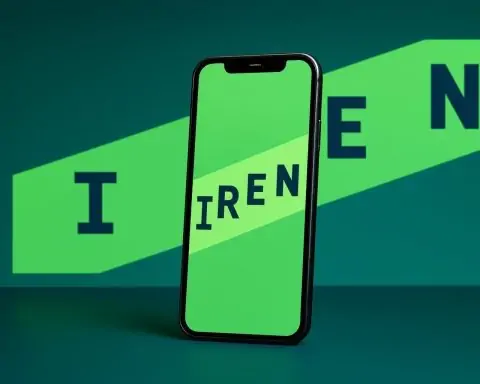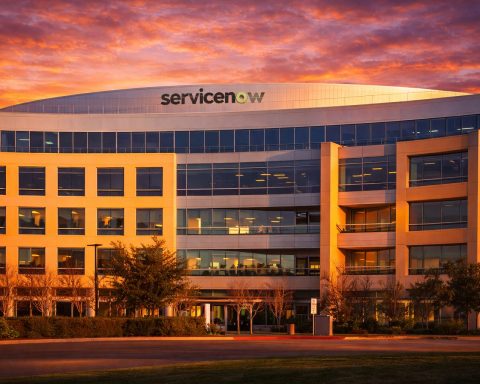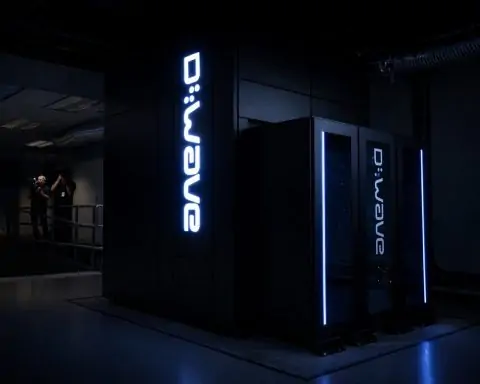Key Facts:
- Researchers simulated linking multiple small quantum chips into one fault-tolerant system even with extremely noisy connections, paving the way for scalable quantum processors [1] [2].
- IBM and AMD announced a partnership to develop “quantum-centric” supercomputers integrating IBM quantum processors with AMD’s high-performance CPUs/GPUs, aiming to push beyond classical computing limits [3] [4].
- The Australian Department of Defence awarded three contracts (AUD $9 million) for quantum technology and information warfare projects, funding quantum machine learning R&D at CSIRO and a quantum processor by Silicon Quantum Computing [5] [6].
- Vietnam launched a national quantum network (“VNQuantum”) on Aug 25, connecting researchers, industry and investors to “place Vietnam on the global quantum map” and spur home-grown innovation [7] [8].
- Canadian startup SuperQ Quantum joined FABrIC, Canada’s $223 million semiconductor–quantum initiative, gaining access to funding, prototyping services and partnerships to commercialize its hybrid quantum-classical platform [9] [10].
- Microsoft unveiled a company-wide Quantum Safe Program to upgrade its infrastructure to post-quantum encryption by 2033 (two years ahead of U.S. federal goals), noting that migration “is not a flip-the-switch moment” but a multi-year effort requiring urgent action [11] [12].
Scientific Breakthroughs and Research Publications
One of the week’s most significant research advances came from a team at the University of California, Riverside, which demonstrated a new approach to scaling quantum computers via modular chips. In simulations, the researchers showed that several small quantum processor chips can be linked into a single fault-tolerant system even if the connections between chips are up to 10 times noisier than the chips themselves [13]. This finding is a major step toward larger quantum machines, indicating that “we don’t have to wait for perfect hardware to scale quantum computers” because high-fidelity chips connected by “good enough” (not perfectly noise-free) links can still work reliably [14]. The study, published in Physical Review A on August 26, tested thousands of networked layouts using the surface code (a common error-correction scheme) and found that distributed error correction remains effective despite noisy inter-chip links [15] [16]. “Our work isn’t about inventing a new chip,” explained first-author Mohamed A. Shalby. “It’s about showing that the chips we already have can be connected to create something much larger and still work. That’s a foundational shift in how we build quantum systems.” [17]
In practical terms, this modular approach suggests a path to scale up quantum processors without waiting for flawless components. Current quantum hardware is limited in size and qubit count, partly because adding more qubits on a single chip increases errors. The UCR-led research addresses this by linking modest-sized quantum modules—with each module internally error-corrected—into a bigger network. Crucially, the team found that quantum error correction can tolerate surprisingly noisy links: as long as each module (chip) has high internal fidelity, error-correction codes like the surface code can detect and fix errors across the network even if the connections are imperfect [18]. This result provides a blueprint for assembling “mega-scale” quantum computers from many small ones, using today’s technology. It also validates efforts by companies exploring modular quantum architectures. Industry groups have emphasized that fault tolerance, more than raw qubit count, is key for useful quantum computing, and this work offers a viable route to achieve it with near-term devices [19] [20].
Other notable research news included progress in quantum error mitigation and calibration techniques. For example, a report in PRX Quantum detailed a new binary-search algorithm for rapid qubit calibration (published August 26), which could help counteract decoherence in real time [21]. And in the broader quantum science community, researchers and analysts continue to stress the importance of moving beyond demonstrations of individual components toward integrated, scalable systems. The UCR study’s success in simulating a multi-chip error-corrected setup is a tangible leap in that direction, showing that quantum computers might grow larger by networking modules even before each module is perfect. This kind of scientific breakthrough underpins the optimism that practical quantum computing can be realized sooner rather than later by cleverly combining existing technologies.
Major Company Announcements and Startup Developments
Several high-profile industry moves in the quantum tech sector grabbed headlines. The biggest came from IBM and AMD, who on August 26 announced a landmark collaboration to develop “quantum-centric” supercomputing architectures. This partnership aims to tightly integrate IBM’s quantum processors and software with AMD’s cutting-edge classical computing hardware (CPUs, GPUs, and FPGAs) to create hybrid systems capable of tackling problems neither platform can solve alone [22]. In a joint statement, IBM CEO Arvind Krishna emphasized that “quantum computing will simulate the natural world and represent information in an entirely new way”, and by pairing IBM quantum machines with AMD’s high-performance technology, “we will build a powerful hybrid model that pushes past the limits of traditional computing.” [23] AMD’s CEO Lisa Su similarly highlighted the “tremendous opportunities to accelerate discovery and innovation” when combining quantum computing with classical high-performance computing [24].
Technically, the IBM–AMD effort will explore linking quantum co-processors with classical hosts to accelerate algorithms in domains like materials science, drug discovery, optimization and AI [25] [26]. For example, in a future “quantum-centric” supercomputer, a quantum processor might handle simulating molecular quantum physics, while AMD’s CPUs/GPUs crunch through large-scale data and machine learning tasks – each doing what it does best. AMD’s hardware is expected to contribute real-time error correction capabilities for IBM’s qubits, a crucial feature on the road to fault-tolerant quantum computing [27]. The companies plan to demonstrate an early prototype of hybrid quantum-classical workflows by the end of the year [28]. Industry watchers see this alliance as indicative of a broader trend: rather than viewing quantum computers as stand-alone rivals to classical supercomputers, the future likely lies in co-designed systems where quantum and classical chips work in concert [29] [30]. By leveraging open-source tools like Qiskit and AMD’s experience powering the world’s fastest supercomputers, IBM hopes to accelerate its roadmap toward a fault-tolerant quantum computer by 2030 [31].
In the startup arena, SuperQ Quantum Computing Inc., a young player focusing on hybrid quantum-classical systems, scored a win by being accepted into Canada’s national FABrIC program on August 27. FABrIC (Framework for Accelerated Battery Research, Innovation and Commercialization) is a five-year, CAD $223 million initiative backed by Canada’s Strategic Innovation Fund to strengthen domestic semiconductor and quantum technology ecosystems [32]. As a new member of FABrIC, SuperQ gains direct access to a network of industry and academic partners, specialized fabrication and prototyping facilities, funding opportunities via challenge calls, and workforce training programs [33] [34]. The company plans to collaborate through FABrIC on projects that advance its Super<sup>TM</sup> platform – a hybrid quantum-classical computing platform – and to co-develop solutions with Canadian universities and chip-makers. “Joining FABrIC is a major strategic milestone for SuperQ. It plugs our platform and R&D partnerships into the country’s coordinated plan to build semiconductor and quantum capacity,” said SuperQ CEO Dr. Muhammad Khan, underscoring that the program “brings funding pathways, prototyping infrastructure, and a national partner network” to speed up commercialization of quantum technologies [35]. SuperQ’s inclusion (and the FABrIC program as a whole) highlights how governments are fostering public–private partnerships to nurture the quantum industry. It also signals confidence in SuperQ’s approach of integrating quantum processors with classical supercomputing to deliver near-term performance gains.
Another notable corporate development came from Microsoft, which announced a comprehensive Quantum Safe security initiative amid growing concern over quantum computers’ future ability to break encryption. On August 26, Microsoft introduced its Quantum Safe Program, a company-wide plan to transition all its products and cloud services to post-quantum cryptography by the early 2030s [36]. The goal is to enable quantum-resistant features by 2029 and complete the shift by 2033, ahead of the 2035 deadline set by many governments for quantum-proofing critical systems [37]. The initiative involves a three-phase overhaul of Microsoft’s infrastructure: first updating fundamental cryptographic libraries (such as SymCrypt and TLS) to use PQ-safe algorithms, then upgrading identity and key management services (like Azure’s Entra ID), and finally ensuring all applications and endpoints are secured with the new standards [38]. Microsoft’s top engineers cautioned that preparing for quantum threats “is not a flip-the-switch moment” but “a multiyear transformation that requires immediate planning and coordinated execution.” [39] They noted phenomena like “harvest now, decrypt later” attacks – where adversaries steal encrypted data now in hopes of decrypting it once quantum computers mature – make this an urgent priority [40]. Microsoft is urging governments worldwide to also treat quantum cybersecurity as a national security priority and is collaborating on international standards for interoperability [41] [42]. This announcement reflects expert consensus that the time to act on post-quantum cryptography is now, well before large-scale quantum computers come online. It also shows tech giants playing a proactive role in the quantum-safe transition, investing today to safeguard data for tomorrow.
Government Policies, Funding Initiatives, and National Programs
Governments across the globe used the week to double down on quantum technology as a strategic priority. In Australia, the Department of Defence announced on Aug 26 the award of three new contracts focused on quantum tech and information warfare, under its Advanced Strategic Capabilities Accelerator’s Emerging and Disruptive Technologies program. The contracts, worth AUD $9 million (USD $5.8 million), expand a broader AUD $60 million initiative to drive cutting-edge innovation for national defense [43]. Notably, CSIRO, Australia’s national science agency, secured funding to develop quantum machine learning algorithms aimed at detecting and countering adversarial deception (such as spoofing attacks) [44]. Another award went to Silicon Quantum Computing (SQC) – a Sydney-based quantum computing startup – to build a sovereign-manufactured quantum-enhanced processor tailored for machine learning applications in defense [45]. A consortium of top Australian universities also received support to research methods for detecting misinformation and disinformation, highlighting the defence department’s interest in both the cyber and quantum aspects of information warfare [46]. Professor Tanya Monro, Australia’s Chief Defence Scientist, described the program as leveraging domestic industry and academia to “deliver new technologies that help minimise surprise and defend national interests.” She emphasized that long-term partnerships and accelerated capability development in areas like quantum are critical, noting that “harnessing the collective experience of Australian innovators, defence scientists and military end-users will ensure Defence is on the front foot at a time of rapid technological development.” [47] [48] By investing in local quantum R&D – from foundational hardware to quantum algorithms – Australia aims to secure a measure of technological sovereignty and military advantage in the coming quantum era.
In Asia, Vietnam made a splash by formally launching a national quantum technology network as part of a broader high-tech initiative. At an event on August 25 (reported in local media by Aug 27), Deputy Prime Minister Nguyen Chi Dung announced the creation of “VNQuantum”, a dedicated network to connect Vietnamese quantum researchers, businesses, and expatriate experts worldwide [49]. This quantum network is one of three new national tech networks (alongside cybersecurity and aerospace) established under the Vietnam Innovation Network to boost the country’s innovation capacity [50] [51]. VNQuantum’s mission is to “place Vietnam on the global map for quantum technology” by fostering collaboration between government, academia, and industry and by accelerating development of practical quantum applications in computing and secure communications [52] [53]. The program is backed by Vietnam’s National Innovation Centre (NIC) with support from major domestic companies like Sovico Group, and it will facilitate international partnerships to tap overseas Vietnamese talent and global expertise [54] [55]. “To become a developed, high-income country by 2045, we must unlock all resources…and put science, technology, and innovation at the core,” Deputy PM Dung urged at the launch, underscoring that “Vietnam cannot afford to lag behind; we must seize opportunities, make breakthroughs, and assert our national position.” [56] Elevating quantum technology to a national priority – alongside semiconductors and AI – signals Vietnam’s intent to ride the next wave of tech revolutions rather than solely consuming foreign innovations. By integrating its diaspora of scientists and forging a network of quantum stakeholders, Vietnam seeks to transition from a technology importer to an active producer in the global quantum ecosystem.
In North America, both the United States and Canada moved to bolster their quantum infrastructure and industry. In the U.S., Montana State University (MSU) celebrated the opening of its new Quantum Collaborative Research and Education (QCORE) center, an interdisciplinary facility dedicated to quantum and photonic systems. The 12,600-square-foot QCORE facility (officially opened on Aug 26 in Bozeman) is supported by a $26.7 million grant from the U.S. Air Force and is envisioned as a hub for transitioning quantum innovations from lab concepts to real-world applications [57] [58]. At the launch event – which featured a “Grand Challenges in Quantum Systems” summit – MSU showcased two newly deployed photonic quantum processors provided by UK-based startup Orca Computing, which were installed and brought online in just two days [59] [60]. These Orca PT-1 quantum systems use photons (light) for quantum information processing and will anchor QCORE’s research into networking quantum devices and hybrid quantum-classical computing. “Bringing Orca’s quantum systems online is an exciting step for QCORE and for Montana,” said Dr. Jayne Morrow, CEO of MSU’s initiative, highlighting that such technology opens doors to breakthroughs in fields ranging from national defense and communications to agriculture and supply chain optimization [61]. The QCORE center is part of a growing trend of regional quantum innovation hubs (in this case, supported by the Air Force to advance U.S. quantum capabilities). Industry observers hailed the deployment of cutting-edge quantum hardware in a university setting as a significant milestone. “The deployment of Orca’s systems at MSU marks an important inflection point, demonstrating how quantum is moving from theory to practice in new and impactful settings,” observed Bob Sorensen, a senior vice president at Hyperion Research [62]. This sentiment captures a broader theme: government investment is catalyzing the spread of quantum technology beyond elite labs into universities and local innovation centers, a critical step in building a quantum-ready workforce and proving out practical uses of quantum tech.
Meanwhile, in Canada, the government’s efforts to knit together quantum and semiconductor development took another step forward with the FABrIC program’s latest intake (as noted above with SuperQ’s membership). Canada views quantum technologies as part of a continuum with its microelectronics industry, which is why FABrIC’s $223 million federal funding aims to support everything from photonic chip fabrication to “Quantum Readiness” training programs [63] [64]. By pulling startups like SuperQ into this fold, Canada is trying to create a virtuous cycle where home-grown companies can prototype advanced devices domestically and find local partners and talent, instead of looking abroad. The SuperQ case is a good example: the company will now be eligible for challenge-based project grants (FABrIC’s first round funded 20 projects, several in quantum sensing and computing) and can leverage shared facilities for building its hardware [65] [66]. Canadian officials hope such support will accelerate commercialization of quantum IP and prevent promising ventures from relocating to Silicon Valley or elsewhere for better resources. In short, Canada’s strategy – like Australia’s and Vietnam’s – underlines that government funding and policy are pivotal in the global quantum race, often filling the gap between academic research and private-sector product development.
It’s worth noting that Europe is also striving to stay competitive, even if no single EU announcement occurred on these exact dates. A position paper released by the European Quantum Industry Consortium (QuIC) just ahead of this period warned that Europe must ramp up support or risk falling behind the U.S. and China. QuIC called for urgent measures like a €2 billion-per-year Quantum Growth Fund, better access to fabrication infrastructure for startups, and a coordinated “Quantum Act” to unify efforts across EU member states [67] [68]. “Europe cannot afford to let its scientific leadership falter at the junction of discovery and deployment,” the paper’s authors wrote, urging the EU to translate its strong quantum research base into industrial and commercial outcomes [69] [70]. This European viewpoint resonates with the flurry of activity seen in the U.S., Asia-Pacific, and elsewhere during the week – all suggesting that every region is scrambling to secure a foothold in the coming quantum economy. Whether through funding consortia, national networks, or public-private partnerships, governments are increasingly treating quantum tech as a strategic, competitive imperative.
Expert Commentary and Outlook
Industry experts and analysts note that the developments over these two days exemplify the accelerating pace and broadening scope of the quantum technology sector. The convergence of scientific breakthroughs, corporate investments, and government initiatives suggests a field transitioning from isolated lab experiments towards a full-fledged tech ecosystem. Direct expert insights underscore both the excitement and the challenges ahead:
- On the technical front, researchers like UCR’s Mohamed Shalby stress the significance of achieving scalability without perfection. His team’s results indicate that today’s imperfect qubit chips can be assembled into something greater than the sum of their parts, which is a highly encouraging sign. “This means we don’t have to wait for perfect hardware to scale quantum computers,” Shalby noted, pointing out that even “good enough” connections can yield a fault-tolerant quantum system if each component is high-quality [71]. This pragmatic approach – focusing on clever architecture and error correction – is echoed by others in the field as the most feasible path in the near term.
- From the industry perspective, the IBM–AMD collaboration drew comments from CEOs of both companies about the promise of uniting quantum with classical supercomputing. Arvind Krishna’s and Lisa Su’s statements highlight a view that hybrid computing models will unlock new possibilities well before fully error-corrected quantum machines are standalone. By leveraging classical computing’s strengths in tandem with quantum’s unique capabilities, they aim to solve problems “beyond the reach of either paradigm independently” [72] [73]. This reflects a broader consensus that integration – whether it’s quantum-classical integration, or integrating multiple quantum modules as in the UCR study – is key to progress in the second half of this decade.
- On government roles, figures like Australia’s Tanya Monro and Vietnam’s Nguyen Chi Dung provided a strategic rationale for public investments in quantum. Monro’s emphasis on fostering long-term partnerships and aligning with national security priorities shows how governments are justifying quantum R&D spending as necessary to “ensure [we are] on the front foot at a time of rapid technological development” [74]. Likewise, Vietnam’s leadership linking quantum technology to future economic status (aiming to be a high-income country by 2045) exemplifies how national aspirations are now tied to prowess in quantum and other advanced tech. This level of political attention is a relatively new phenomenon and signals that quantum tech has graduated from a niche scientific curiosity to an arena of geopolitical and economic importance.
- Security analysts and tech executives, such as Microsoft’s Mark Russinovich, are also chiming in on the often-overlooked urgency of quantum-proofing encryption. Their caution that transitioning to post-quantum cryptography is a complex, years-long process – “not a flip-the-switch moment” [75] – serves as a reality check. While quantum computing offers thrilling possibilities, it also poses a threat to current cybersecurity. Experts widely advise that preparations for that threat must begin now, well in advance of a practical quantum code-breaker emerging. Microsoft’s proactive plan and its call for global coordination on quantum-safe standards received positive nods from cybersecurity experts, who agree that the quantum security transition needs the same level of priority and planning as Y2K or other systemic tech shifts, albeit on a longer timeline.
- Market watchers and independent analysts observing these developments often remark on the growing maturity of the quantum sector. Bob Sorensen of Hyperion Research, for instance, noted that seeing state-of-the-art quantum systems (like Orca’s photonic processors) deployed in an operational setting at MSU is an encouraging sign that quantum tech is “moving from theory to practice” [76]. This quote captures a crucial point: real-world implementations and testbeds – whether at a university, a company, or a government lab – are vital for uncovering practical challenges and training the next generation of quantum engineers. The consensus among experts is that 2025 is a inflection point year: technology demonstrations are scaling up, investments are pouring in, and nations are staking out positions. However, significant hurdles remain (such as improving qubit coherence, developing better quantum algorithms, and ensuring a robust talent pipeline), and overcoming these will require sustained collaboration between scientists, industry, and governments.
Looking at the big picture, the flurry of news on August 26–27, 2025, paints a picture of a rapidly evolving quantum landscape. Scientific innovation is tackling core technical barriers, companies are forging alliances to commercialize quantum advantages, and governments are crafting policies to cultivate and secure this strategic technology. As Dr. Muhammad Khan of SuperQ aptly put it, being part of national initiatives “plugs [us] into a coordinated plan to build quantum capacity” [77] – and indeed, across the world we see coordinated plans taking shape. While it’s still early days in the quest to make quantum computing ubiquitous and truly transformative, these developments demonstrate a global momentum. Each breakthrough and investment — from linking noisy qubit chips, to launching quantum networks, to funding startup collaborations — is a step toward the long-envisioned quantum future. As one analyst quipped, the quantum revolution is no longer a distant abstraction; it’s happening now in research labs, boardrooms, and government halls, one experiment and one policy at a time. The takeaway for observers and stakeholders is clear: quantum technology is accelerating, and those who invest and innovate today will help define the technological and economic landscape of tomorrow.
Sources: The information and quotes in this report are sourced from recent news releases, research publications, and expert interviews, including Quantum Computing Report updates (Aug 26 2025) [78] [79], press releases and articles from IBM Newsroom [80] [81], Microsoft [82] [83], and leading quantum tech media such as The Quantum Insider [84] [85] and IoT World Today [86] [87], among others. These sources provide a connected view of the latest quantum breakthroughs, industry alliances, government programs, and expert perspectives between August 26 and 27, 2025.
References
1. quantumcomputingreport.com, 2. thequantuminsider.com, 3. newsroom.ibm.com, 4. newsroom.ibm.com, 5. quantumcomputingreport.com, 6. quantumcomputingreport.com, 7. thequantuminsider.com, 8. thequantuminsider.com, 9. thequantuminsider.com, 10. thequantuminsider.com, 11. www.iotworldtoday.com, 12. www.iotworldtoday.com, 13. quantumcomputingreport.com, 14. thequantuminsider.com, 15. thequantuminsider.com, 16. thequantuminsider.com, 17. thequantuminsider.com, 18. thequantuminsider.com, 19. quantumcomputingreport.com, 20. thequantuminsider.com, 21. newsroom.ibm.com, 22. quantumcomputingreport.com, 23. newsroom.ibm.com, 24. newsroom.ibm.com, 25. newsroom.ibm.com, 26. newsroom.ibm.com, 27. newsroom.ibm.com, 28. newsroom.ibm.com, 29. quantumcomputingreport.com, 30. newsroom.ibm.com, 31. quantumcomputingreport.com, 32. thequantuminsider.com, 33. thequantuminsider.com, 34. thequantuminsider.com, 35. thequantuminsider.com, 36. www.iotworldtoday.com, 37. www.iotworldtoday.com, 38. www.iotworldtoday.com, 39. www.iotworldtoday.com, 40. www.iotworldtoday.com, 41. www.iotworldtoday.com, 42. www.iotworldtoday.com, 43. quantumcomputingreport.com, 44. quantumcomputingreport.com, 45. quantumcomputingreport.com, 46. quantumcomputingreport.com, 47. www.defence.gov.au, 48. www.defence.gov.au, 49. thequantuminsider.com, 50. thequantuminsider.com, 51. thequantuminsider.com, 52. thequantuminsider.com, 53. thequantuminsider.com, 54. thequantuminsider.com, 55. thequantuminsider.com, 56. thequantuminsider.com, 57. www.iotworldtoday.com, 58. www.iotworldtoday.com, 59. www.iotworldtoday.com, 60. www.iotworldtoday.com, 61. www.iotworldtoday.com, 62. www.iotworldtoday.com, 63. thequantuminsider.com, 64. thequantuminsider.com, 65. thequantuminsider.com, 66. thequantuminsider.com, 67. thequantuminsider.com, 68. thequantuminsider.com, 69. thequantuminsider.com, 70. thequantuminsider.com, 71. thequantuminsider.com, 72. quantumcomputingreport.com, 73. newsroom.ibm.com, 74. www.defence.gov.au, 75. www.iotworldtoday.com, 76. www.iotworldtoday.com, 77. thequantuminsider.com, 78. quantumcomputingreport.com, 79. quantumcomputingreport.com, 80. newsroom.ibm.com, 81. newsroom.ibm.com, 82. www.iotworldtoday.com, 83. www.iotworldtoday.com, 84. thequantuminsider.com, 85. thequantuminsider.com, 86. www.iotworldtoday.com, 87. www.iotworldtoday.com










